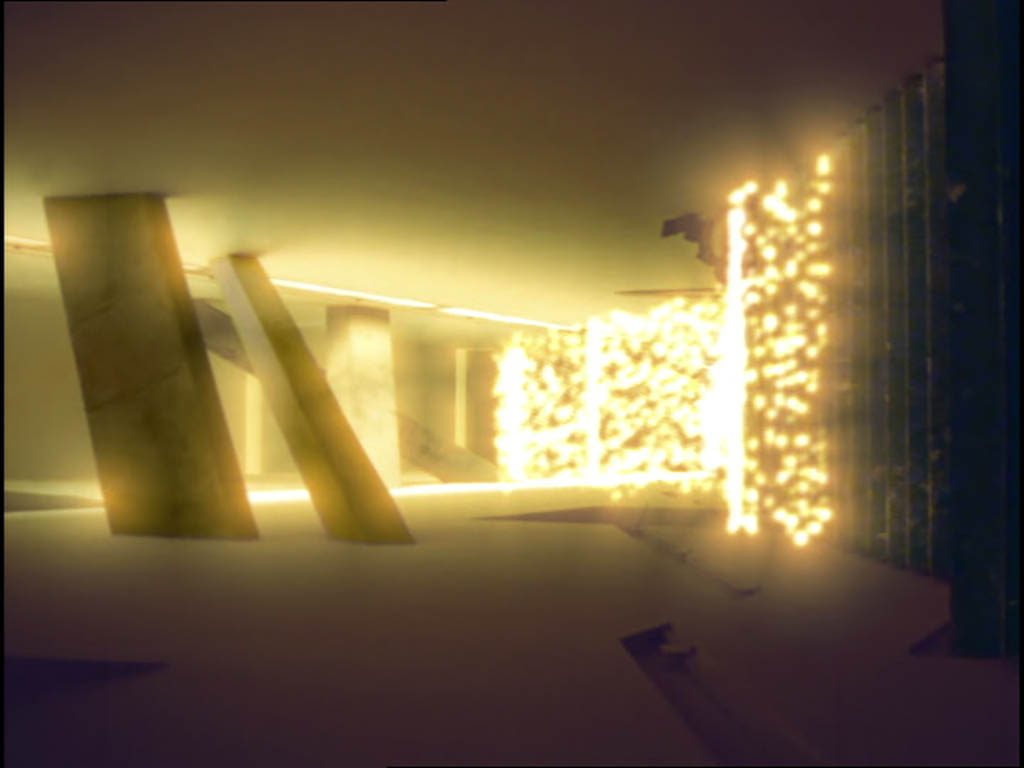
In Angle/Im Winkel Film
https://www.youtube.com/watch?v=ZX9ch-alozo&t=1s
Concept: Ben Anderson
Motion Graphics: Lars Künstler
5:15mins colour
Producer: Visiting Card Productions
In Angle/Im Winkel 1998 begins with a line drawn as the first definition of space. Sound creates the audio thematic joinery as the spectator is propelled through a series of developing and cognitive environments that incorporate the real (the photographs) and the made (computer generated work) towards the projection for the ‘other’ – Wagnerian space. This film creates and distinguishes two orders of space: the ‘projected’ space as the real and the measurable and, the ‘projection’ of generated space shown as limitless and fluid.
The film’s first image, a line, is drawn along the screen’s surface, becoming visible by separating the black of the picture. A visual form is fed into this line; the projection of spatial measurements and dimensions of a space in a continuous fluid movement. This line, a gap separating blackness, fills until the screen opens via a diminished rectangle in perspective revealing in part a room that, in turn, fills to saturate the screen with abstracted shapes in the single colour, red. With the introduction over and a visual language established, the film continues to evolve from the static to the fluid in animating the captured spaces from Libeskind’s building towards a mythical spatial rearrangement.
The representational spaces in the film come not from a scenic aesthetic but through the dramatic action in the interchange of the static and fluid; creating and recreating one from the other. This mirroring effect – spaces of gazes and mirages – is manifested through a cyclic momentum. The film takes the relationship between the spectator and image through associations with subject/object quantification into finally sublime spaces. These animated spaces born from the real, seek their own reality and through their seductive nature make the other – a new visual recording of space – desired. Whether or not this film deals successfully with creating pictures and movements in describing Wagnerian space cannot be answered conclusively but its joinery of the ‘real’ in conjunction with the ‘virtual’ seeks to build a work/ theory and ‘desiring effect’ based on myth and its projection in the world.